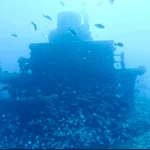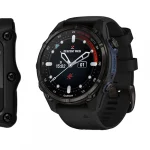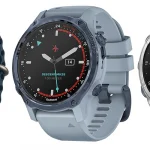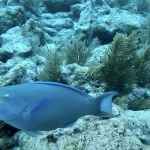Getting Started: Why Key West is Perfect for New Divers
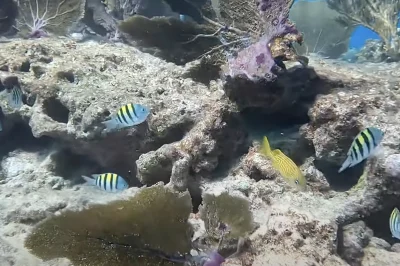
Table of Contents
- Getting Started: Why Key West is Perfect for New Divers
- Debunking Common Scuba Diving Myths in Key West
- Avoiding Rookie Mistakes: A Beginner’s Guide to Scuba Success
- Current Trends: How Key West is Adapting to Novice Divers
- Key West vs. Other Locations: How Safety Measures Stack Up
- Unlocking the Secrets of Safe Diving Practices in Key West
- Safety First: Analyzing the Best Training Programs in Key West
- Safety Gadgets and Gear: What’s Worth the Investment
Introduction
If you’re a scuba diver planning a trip to Key West, you’re in for a treat. But how safe is scuba diving for beginners in this paradise? With insights from over 25,000 divers, we’ve crafted this comprehensive guide to answer your questions and ensure a safe and enjoyable diving experience. Dive into our analysis and see what seasoned divers want you to know about starting your underwater journey here.
Getting Started: Why Key West is Perfect for New Divers
Debunking Common Scuba Diving Myths in Key West
Scuba diving in Key West offers incredible experiences, but several myths often hinder beginners from trying this thrilling activity. Understanding and dispelling these misconceptions can boost confidence and enhance enjoyment.
Myth 1: You Need to Be a Strong Swimmer
Many people believe that being a strong swimmer is essential for scuba diving. In reality, basic swimming skills and comfort in water are all that’s necessary. Most dive courses in Key West focus on learning how to manage buoyancy and dive equipment rather than endurance swimming. Additionally, beginners typically dive in calm, shallow waters where physical fitness is less of a concern.
Myth 2: Scuba Diving Is Extremely Dangerous
Scuba diving is surprisingly safe when proper training is followed. The perceived risks are often exaggerated. Reports show that incidents are minimal compared to other recreational activities. Dive operators in Key West train divers on safety protocols, including pre-dive checks and buddy systems, all aimed at minimizing risks during underwater adventures.
Myth 3: Certification Takes Too Long
Some individuals assume that earning a scuba certification requires significant time, but this isn’t the case. Open Water certifications can usually be completed in just a few days, aligning well with vacation plans. Many dive shops in Key West offer expedited courses, allowing for a seamless transition from land to sea.
Myth 4: You Need to Invest in Expensive Gear
Another misconception is that you need to buy costly equipment before diving. Most newcomers rent decent quality gear at reasonable prices. This approach allows divers to focus on developing skills without the initial investment in expensive equipment.
Myth 5: Visibility Is Always Poor
Potential divers might worry about murky water conditions, but Key West boasts crystal-clear waters with visibility often exceeding 30 feet. This clarity makes it easier for beginners to explore the stunning marine life and natural beauty underwater without feeling apprehensive.
Debunking Common Scuba Diving Myths in Key West
Scuba diving in Key West can be a thrilling experience, but beginners often encounter common pitfalls that can detract from their enjoyment and safety. Being aware of these rookie mistakes can help ensure a smoother diving experience.
Common Mistakes & Solutions for Beginner Divers in Key West
1. Ascending Too Quickly or Skipping Safety Stops
Mistake: Rapid ascents and failing to perform safety stops can significantly increase the risk of decompression sickness.
Solution: Always ascend at a controlled rate between 9 to 30 feet per minute and include a safety stop at around 15 to 20 feet for 3 to 5 minutes. This allows excess nitrogen to off-gas safely.
2. Improper Buoyancy Adjustments
Mistake: Making large buoyancy adjustments with your buoyancy control device (BCD) instead of subtle changes can lead to instability underwater.
Solution: Adjust buoyancy in small increments, such as adding or releasing air equivalent to 1-2 breaths. Wait 10-15 seconds after each adjustment to assess the effect before making further changes.
3. Inadequate Gauge Monitoring
Mistake: Failing to regularly check your depth, air supply, or dive time can lead to dangerous situations.
Solution: Familiarise yourself with critical data points (like your current depth and remaining air supply) and check your gauges every 5-10 minutes. Share this information with your diving buddy to ensure mutual awareness.
4. Equalisation Challenges
Mistake: Forcing ear equalisation or neglecting discomfort can lead to injuries like barotrauma.
Solution: Use the Valsalva manoeuvre (pinch your nose and gently blow) as you descend. If you cannot equalise after several attempts, it’s crucial to abort the dive to prevent injury.
5. Choosing Unreliable Dive Operators
Mistake: Overlooking the safety certifications and experience of dive shops can jeopardise your dive experience.
Solution: Always choose reputable dive operators that are PADI or SSI-certified. Ensure they offer guided dives in shallow waters (typically 5-30 feet) and prioritise safety and supervision, especially for beginners.
Additional Tips
- Pre-Dive Checks: Always verify the integrity of your equipment before diving, including O-rings and regulators. Consider carrying a save-a-dive kit for minor repairs.
- Mindset: Emphasise comfort over depth. Focus on maintaining controlled breathing and buoyancy rather than attempting to swim aggressively.
Avoiding Rookie Mistakes: A Beginner’s Guide to Scuba Success
For novice divers planning a scuba adventure in Key West, the area offers accommodations equipped with technologies and features tailored to enhance safety and accessibility. While many options are within Key West, several nearby resorts provide specialised facilities to support beginners in their diving journey.
Nearby Florida Keys Dive Resorts
These options, which are located outside Key West but are worth considering, provide exceptional resources for novice divers:
1. Hawks Cay Resort (Duck Key)
- Pool Training: Introductory classes are conducted in a heated pool, allowing new divers to practise skills in a controlled environment.
- Instructor-Led Dives: Once trained, beginners can graduate to open-water dives guided by certified instructors at various coral reefs.
- Certifications: Offers PADI and SDI certification courses, including check-out dives and refresher sessions to boost confidence.
- Reef Trips: Features two-tank dives at diverse locations, accommodating snorkellers who wish to join.
Location: Duck Key (Middle Keys).
2. Looe Key Reef Resort (Lower Keys)
- Proximity to Dive Sites: Located next to Looe Key Reef, recognised as an excellent spot for snorkelling and diving.
- Daily Reef Trips: An on-site dive shop and dedicated boats streamline the diving experience for novices.
- Recreational Amenities: Includes a Tiki bar and sunset cruises, offering relaxation after dive outings.
Location: Lower Keys, conveniently close to Key West.
3. Amoray Dive Resort (Key Largo)
- Certification Programmes: Recognised as a PADI® 5 Star Centre, providing on-site training and certification courses.
- Experienced Staff: Skilled and friendly crews ensure a safe and enjoyable diving experience for newcomers.
- Bayside Access: Direct access through the resort’s dock simplifies the logistics involved for beginner divers.
Location: Key Largo (Upper Keys).
Key West Options
While accommodations in Key West may not be as specialised, some resorts offer essential diving access:
1. Ocean’s Edge Resort & Marina
- Marina Access: This resort features a marina that provides easy entry to dive boats, facilitating hassle-free trips for beginners.
- Basic Dive Amenities: Explore local dive sites with beginner-friendly resources available, although detailed offerings may vary.
Location: Key West.
2. Ocean Key Resort & Spa
- Scenic Location: Situated directly on the water’s edge, providing picturesque views and proximity to diving areas.
- General Amenities: While more of a spa destination, it still caters to divers wanting easy access to local dive operations.
Location: Key West.
3. Pier House Resort & Spa
- Dive Access: Positioned on the waterfront, it offers access to diving services nearby but may require coordination with external dive operators.
- Relaxed Atmosphere: Combines leisure amenities with diving opportunities for a balanced experience.
Location: Key West.
While Key West offers options for novice divers, those looking for enhanced training facilities and guided experiences may find more comprehensive support at nearby resorts in the Florida Keys.
Current Trends: How Key West is Adapting to Novice Divers
Key West scuba diving offers a unique underwater experience that is generally safe for beginners. However, understanding the safety statistics can help newcomers prepare and make informed decisions. Fatalities in scuba diving are rare, with rates of about 2–3 deaths per 100,000 dives for certified divers, specifically within Key West, reflecting a lower risk compared to other recreational activities. This is essential knowledge for beginners who may feel apprehensive about diving safety.
One of the pivotal elements that underpin the safety of beginner divers is the mandatory requirement for certification through reputable dive operators, such as PADI, NAUI, or SSI. This certification process includes comprehensive emergency preparedness training, which equips divers with the skills necessary to manage potential risks associated with underwater environments. For beginners, this foundational training signifies a commitment to safety and a significant reduction in risk exposure when compared to unqualified divers.
To further contextualise certifications and safety measures, it’s crucial to consider how beginner-specific risks compare to those of experienced and unqualified divers:
- Certification Requirements: All reputable dive companies require beginners to be certified, ensuring proper training in safety protocols and emergency measures.
- Fatality Rates: Certified divers face a fatality rate of only 2–3 per 100,000 dives, whereas the broader rate for non-commercial diving ranges significantly higher from 0.45 to 3.4 deaths per 100,000 dives.
- Experience vs. Training: While experienced divers may exhibit lower fatality rates, the effectiveness of their training can vary widely compared to the structured training provided in certification courses.
Interestingly, day-to-day risks such as driving to the dive location have been noted to be more dangerous than the act of diving itself. Furthermore, some of the few diving fatalities reported involve older individuals, emphasising the importance of health assessments prior to participating in diving activities, regardless of age.
Key West vs. Other Locations: How Safety Measures Stack Up
For beginners diving in Key West, following specific safe diving practices is essential to ensure a fun and secure experience. The clarity of the waters and the shallow reefs create an ideal environment for novice divers, but understanding how to operate safely is key.
Certification and Training: Always ensure you have proper certification, such as PADI, NAUI, or SSI, from a reputable dive shop. In Key West, dive operators will require certification and provide thorough safety instruction, covering emergency procedures and dive planning. Typically, training takes place in calm waters at depths of 5-50 feet, making it perfect for beginners
- Pre-Dive Safety Checks:
- Buddy System: Always pair with a certified diver to monitor each other, establishing hand signals for effective underwater communication.
- Gear Inspection: Check that your regulator functions correctly, your buoyancy control device (BCD) inflates properly, and you have the right weight distribution. Perform a final weight check after entering the water to ensure neutral buoyancy.
- Dive Plan: During pre-dive briefings, discuss the dive site details, establish the maximum depth (usually 10-30 feet for beginners), and clarify emergency protocols.
- Entry Techniques:
- Giant Stride: Step confidently off the boat, signalling “Okay” after entering the water.
- Seated Back Roll: Another method often taught for specific scenarios.
- In-Water Best Practices:
- Marine Life Interaction: Avoid touching fragile coral and maintain a respectful distance from wildlife. Refrain from using flash photography to minimise disturbances to marine life.
- Decompression Awareness: Always ascend slowly, making gradual depth changes to prevent decompression sickness.
- Emergencies and Risks:
- Stay Calm: If any issues arise, immediately signal your buddy and ascend slowly.
- Risk Management: While diving accidents are rare (around 2-3 fatalities per 100,000 dives), risks can be mitigated by adherence to certification guidelines and limits.
Key West offers a unique advantage with its shallow barrier reef, typically at depths of 20-30 feet. The excellent visibility and vibrant marine life make it an ideal location for beginners to master scuba diving skills safely.
Unlocking the Secrets of Safe Diving Practices in Key West
Certification Structure and Success Factors
Key West’s scuba diving training programmes, particularly the PADI Open Water Certification, emphasise structured training composed of three critical phases: knowledge development, confined water dives, and open water dives. This multi-phase approach is designed to equip beginners with the necessary skills and confidence before venturing into deeper waters. Many courses allow students to begin their academic training online, which helps streamline the learning process and prepares them for practical sessions in both pools and the ocean.
- Pool Instruction: Students practise essential skills such as equipment assembly, buoyancy control, and emergency procedures in a safe, controlled environment.
- Open-Water Training: Participants undertake real dives at Key West’s stunning coral reefs, limited to a depth of 60 feet, which caters to recreational divers.
- Gear Quality: Programmes commonly include high-quality equipment to ensure reliability and the comfort of divers during their training.
Success Rates and Testimonials
While explicit statistics on certification success rates are not always available, the feedback from participants indicates a high level of satisfaction. An impressive 100% of reviewers recommend PADI Open Water courses offered in Key West, often highlighting the quality of instruction and the safety measures in place. This level of endorsement suggests that students leave the programme with both the skills and confidence necessary for independent diving adventures.
Safety and Training Standards
- PADI Global Recognition: Key West programmes adhere to PADI’s stringent curriculum, ensuring standardised safety procedures are followed throughout training.
- Risk Mitigation: Divers learn essential pre-dive checks and emergency ascent drills, alongside techniques for maintaining neutral buoyancy.
- Professional Training Options: Advanced programmes like the Divemaster Programme provide intensive eight-week training, bolstering safety and operational competency for those pursuing diving as a career.
Programme Options
| Certification Type | Key Features |
|---|---|
| PADI Open Water | $499 (includes academics), low instructor-to-student ratio, and coral reef dives |
| Discover Scuba | One-day introductory programme with pool session followed by ocean dive |
| Divemaster | Eight-week professional training with both PADI and SNUBA certifications |
As of 2025, the courses reflect updated PADI standards, emphasising the importance of e-learning flexibility and practical hands-on experience in the clear waters of Key West.
Safety First: Analysing the Best Training Programmes in Key West
Essential Scuba Gear for Beginners in Key West
When diving in Key West, having the right scuba gear is vital for ensuring safety and comfort, especially for beginners. Here’s a detailed overview of the essential equipment to invest in before you dive into the vibrant underwater world of the Florida Keys.
Mask
- Choosing a well-fitting mask is crucial for clear underwater vision and effective pressure equalisation. Beginners should consider the Oceanic Shadow, known for its comfort and durability.
Snorkel
- This device allows divers to conserve air while swimming at the surface. It’s an essential tool for beginners managing their air supply during dives.
Fins
- For warm waters like those in Key West, full-foot fins are recommended. If opting for open-heel fins, consider pairing them with booties for better comfort on entry.
Wetsuit
- Even in warmer waters, a wetsuit provides protection against both abrasions and thermal loss. A shorty wetsuit or a 1/4mm thickness is ideal for Key West conditions.
Buoyancy Control Device (BCD)
- This device is critical for managing neutral buoyancy during dives and often includes integrated weights, eliminating the need for a separate weight belt. SCUBAPRO offers a variety of suitable options.
Regulator
- Your regulator is how you breathe underwater, typically bundled with the BCD. Make sure it is reliable and comfortable.
Dive Computer
- This is essential for tracking depth, time, and ensuring adherence to safety limits. The SUUNTO Zoop Novo is a cost-effective and reliable model perfect for beginners.
Defog
- Using defog solution on your mask will help prevent fogging during your dives, making for a clearer and safer experience.
Dive Bag
- A dive bag helps organise and transport all your gear, making it a useful addition to your setup.
Optional Additions
Backup Light
- A small, pocket-sized backup light is great for exploring crevices and enhancing visibility in murky conditions.
Surface Marker Buoy (SMB)
- An advanced safety tool often used by experienced divers, the SMB can assist in getting attention from surface vessels.
For a standard beginner package in Key West, prioritise acquiring a mask, snorkel, fins, wetsuit, BCD, regulator, and dive computer to ensure a safe and enjoyable diving experience.
Safety Gadgets and Gear: What’s Worth the Investment
Scuba diving in Key West is regarded as a relatively safe activity for beginners, especially when following essential safety protocols. Here are key guidelines that first-time divers should keep in mind:
Certification and Training
Beginners must engage in entry-level training programmes, such as the PADI Discover Scuba Diving, from reputable diving operators. Certification ensures that divers are educated in risk management, emergency procedures, and buoyancy control, thereby solidifying safety knowledge in real diving situations. Notably, dive shops will not issue tank fills to uncertified individuals, which emphasises the importance of proper training as a fundamental requirement for safe diving.
Depth Limits
For first dives, it is generally recommended to stay within a depth range of 5 to 30 feet. Such shallower environments are ideal for beginners as they allow for better acclimatisation without overwhelming stress. Popular beginner-friendly sites, such as the USNS Gen. Hoyt S. Vandenberg, present opportunities for divers to explore while remaining within guided contexts, ensuring extra safety measures are in place.
Basic Gear Essentials
- Dive Computer: Essential for monitoring depth, bottom time, and ensuring safe ascent rates.
- BCD (Buoyancy Control Device) and Fins: These items aid in buoyancy management and ease of movement underwater.
- Wetsuit: Even in warm waters, a wetsuit is recommended for protection against abrasions and temperature fluctuations, especially at greater depths.
Equalisation Techniques
It’s crucial for divers to perform equalisation effectively to avoid discomfort or injury. This can be achieved by pinching the nose and gently blowing. Should discomfort persist during descent, divers must prioritise safety by ascending slowly or opting to abort the dive entirely.
Choosing Reputable Operators
Selecting a dive charter is critical for a safe experience. Look for operators that provide:
- Thorough briefings about dive sites and conditions prior to the dive.
- Small group sizes that allow for more personalised supervision.
- Established emergency protocols and the necessary safety equipment on board.
Additional Tips
- Stay Calm: Focus on buoyancy control; avoid strenuous swimming to maintain breath and energy.
- Dive Within Limits: Adhere to depth limits and time constraints as set by your certification level.
With its warm, crystal-clear waters and an array of shallow dive sites, Key West serves as a forgiving environment for beginners, provided that divers adhere to these outlined safety principles.
Sources
- Dive Curacao – Scuba Diving Myths
- Dipndive – 7 Common Scuba Diving Myths
- PADI – Top 10 Scuba Diving Myths
- Captain Hook’s – How to Prepare for Your First Scuba Dive
- Dive Curacao – Common Mistakes in Scuba Diving
- TripAdvisor – Scuba Diving for the First Time: Is it Risky?
- TripAdvisor – Key West Diving Resorts
- Key West Scuba Diving

